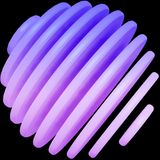Check out our Root admin template!
A minimalistic, low-level CSS framework
A low-level, lightweight and modern CSS system, authoring tool built on Sass. Give your project a solid foundation.
@forward 'header';
@forward 'footer';@use 'sprucecss/scss/spruce' as *;
.site-footer {
background-color: color('background', 'footer');
padding-block: spacer-clamp('xl', 'xxl');
&__top {
@include layout-grid('l', 14rem);
}
&__logo {
--dimension: 4rem;
block-size: var(--dimension);
display: inline-flex;
inline-size: var(--dimension);
}
&__title {
font-size: font-size('h4');
margin-block: 0 spacer('m');
}
&__navigation {
@include clear-list;
@include layout-stack('xs');
a {
color: color(text);
text-decoration: none;
&:hover,
&:focus,
&:active,
&[aria-current='page'] {
color: color('primary');
}
&[aria-current='page'] {
font-weight: 700;
}
}
}
&__bottom {
padding-block-start: spacer('l');
@include breakpoint('md') {
align-items: center;
display: flex;
gap: spacer('s');
justify-content: space-between;
}
}
&__copyright {
margin-block: 0;
}
}@use 'sprucecss/scss/spruce' as *;
.site-header {
position: relative;
&__inner {
--block-size: 6rem;
align-items: center;
block-size: var(--block-size);
display: flex;
flex-wrap: wrap;
gap: spacer-clamp('s', 'l');
justify-content: space-between;
}
&__column {
align-items: center;
display: flex;
flex-grow: 1;
gap: spacer-clamp('s', 'l');
}
&__actions {
align-items: center;
display: flex;
gap: spacer-clamp('s', 'm');
}
&__logo {
--dimension: 4rem;
block-size: var(--dimension);
display: inline-flex;
inline-size: var(--dimension);
}
&__email {
display: none;
text-decoration: none;
@include breakpoint('sm') {
display: inline-block;
}
}
&__navigation {
margin-inline-start: auto;
@include breakpoint('md') {
margin-inline-start: 0;
}
ul {
border-block-start: 1px solid color('border');
@include breakpoint('sm') {
border-block: none;
}
}
}
}@use 'dark-colors' as dark;
@use 'sprucecss/scss/spruce' with (
$colors: (
'footer': (
'background': hsl(215deg 100% 98%),
)
),
$dark-colors: dark.$colors,
$typography: (
'font-family-base': #{'Open Sans', sans-serif},
'font-family-heading': #{'Manrope', sans-serif},
),
);@use 'sass:color';
$color-black: hsl(206deg 100% 7%);
$color-danger: hsl(0deg 71% 51%);
$color-gray-dark: hsl(0deg 0% 100% / 8%);
$color-gray: hsl(0deg 0% 97%);
$color-primary: hsl(261deg 54% 70%);
$color-secondary: hsl(227deg 92% 55%);
$color-success: hsl(150deg 100% 33%);
$color-white: hsl(0deg 0% 95%);
$colors: (
'base': (
'background': $color-black,
'blockquote-border': $color-primary,
'border': $color-gray-dark,
'code-background': hsl(207deg 64% 18%),
'code-foreground': $color-white,
'heading': $color-white,
'link': $color-primary,
'link-hover': color.scale($color-primary, $lightness: 20%),
'mark-background': hsl(50 100% 80%),
'mark-foreground': $color-black,
'marker': $color-primary,
'primary': $color-primary,
'secondary': $color-secondary,
'text': $color-gray,
),
'btn': (
'primary-background': hsl(261 52% 59%),
'primary-background-hover': hsl(261 52% 65%),
'primary-foreground': $color-white,
'secondary-background': $color-secondary,
'secondary-background-hover': color.adjust($color-secondary, $lightness: 5%),
'secondary-foreground': $color-white,
),
'footer': (
'background': hsl(206deg 100% 5%),
),
'form': (
'background': color.scale($color-black, $lightness: 5%),
'background-disabled': $color-black,
'border': $color-gray-dark,
'border-disabled': $color-gray-dark,
'border-focus': $color-primary,
'check-background': $color-primary,
'check-focus-ring': $color-primary,
'check-foreground': $color-black,
'invalid': $color-danger,
'invalid-focus-ring': color.adjust($color-danger, $alpha: -0.75),
'label': $color-white,
'legend': $color-white,
'placeholder': hsl(0deg 0% 60%),
'range-thumb-background': $color-primary,
'range-thumb-focus-ring': $color-primary,
'range-track-background': $color-gray-dark,
'ring-focus': color.adjust($color-primary, $alpha: -0.75),
'select-foreground': hsl(0deg 0% 100%),
'text': $color-gray,
'valid': $color-success,
'valid-focus-ring': color.adjust($color-success, $alpha: -0.75),
),
'selection': (
'background': $color-primary,
'foreground': $color-white,
),
'scrollbar': (
'thumb-background': hsl(0deg 0% 100% / 15%),
'thumb-background-hover': hsl(0deg 0% 100% / 25%),
'track-background': hsl(0deg 0% 100% / 5%),
),
'table': (
'border': $color-gray-dark,
'caption': $color-gray,
'heading': $color-white,
'hover': hsl(0deg 0% 100% / 5%),
'text': $color-gray,
'stripe': hsl(0deg 0% 100% / 2.5%),
)
);@use 'sprucecss/scss/spruce' as *;
@include generate-color-variables(
$dark-colors,
':root[data-theme-mode="dark"]'
);
[data-theme-mode='dark'] {
color-scheme: dark;
}@use 'sprucecss/scss/spruce' as *;
@include font-face(
'Manrope',
'../../font/manrope-v13-latin_latin-ext-regular.woff2'
);
@include font-face(
'Manrope',
'../../font/manrope-v13-latin_latin-ext-300.woff2',
300
);
@include font-face(
'Manrope',
'../../font/manrope-v13-latin_latin-ext-600.woff2',
600
);
@include font-face(
'Manrope',
'../../font/manrope-v13-latin_latin-ext-700.woff2',
700
);
@include font-face(
'Manrope',
'../../font/manrope-v13-latin_latin-ext-800.woff2',
800
);
@include font-face(
'Open Sans',
'../../font/open-sans-v34-latin_latin-ext-regular.woff2'
);
@include font-face(
'Open Sans',
'../../font/open-sans-v34-latin_latin-ext-700.woff2',
700
);@forward 'config';
@forward 'fonts';
@forward 'styles';
@forward 'dark-mode';@use 'sprucecss/scss/spruce' as *;
@include generate-styles;@forward 'config';
@forward 'component';


Good to Know
Spruce CSS in nutshell.